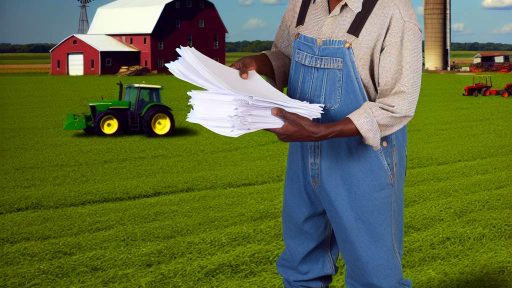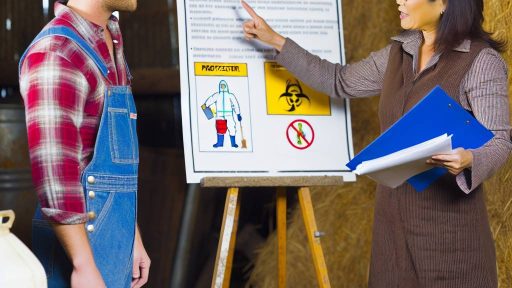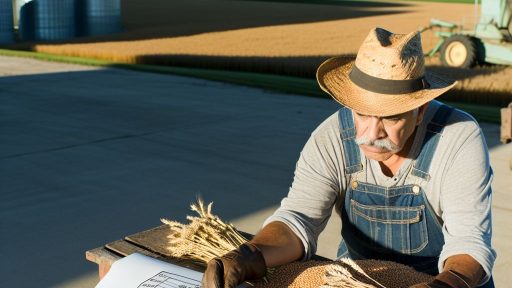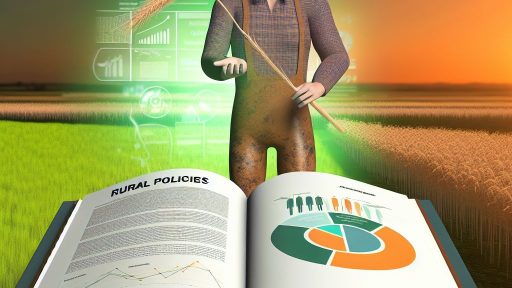Overview of Climate Legislation
Goals of Climate Legislation
Climate legislation aims to reduce greenhouse gas emissions effectively.
Promoting renewable energy sources plays a crucial role in these efforts.
Protecting vulnerable ecosystems is also a primary goal of these laws.
Legislation seeks to foster sustainable agricultural practices.
Moreover, it encourages innovation in environmental technologies.
Objectives of Climate Legislation
The objective includes enhancing climate resilience among agricultural sectors.
Increasing energy efficiency is another focal point of these initiatives.
Legislation also intends to improve public awareness regarding climate change impacts.
Supporting farmers through financial incentives is essential for successful implementation.
Additionally, lawmakers aim to ensure equity in climate actions across communities.
Types of Climate Legislation
Cap-and-trade systems are a common regulatory approach.
Carbon taxes also represent a significant facet of climate legislation.
Subsidies for renewable energy adoption further aid climate goals.
Additionally, legislation establishes regulations for emissions standards.
Research and development funding fosters innovations in agriculture.
Transform Your Agribusiness
Unlock your farm's potential with expert advice tailored to your needs. Get actionable steps that drive real results.
Get StartedAnalysis of Current Climate Policies Affecting Agriculture
Overview of Key Legislation
Various climate legislation has emerged globally in recent years.
These laws aim to reduce greenhouse gas emissions significantly.
Additionally, they seek to promote sustainable agricultural practices.
Key initiatives include the Green New Deal and local conservation laws.
Impact on Crop Production
Climate policies directly influence crop production methods.
Farmers are now adopting more sustainable practices due to regulations.
Transitioning to organic farming can enhance soil health.
Consequently, this may also improve crop yield over time.
Financial Incentives for Farmers
Many governments offer financial incentives for sustainable agriculture.
Grants and subsidies help farmers implement eco-friendly technologies.
These incentives encourage investment in renewable energy solutions.
As a result, crop production becomes more resilient to climate change.
Challenges Faced by Farmers
Implementing these policies presents challenges for many farmers.
Compliance with regulations can lead to increased operational costs.
Smallholder farmers may struggle to meet new standards.
Moreover, fluctuating weather patterns create uncertainty in agriculture.
The Role of Technology
Technology plays a crucial role in adapting to climate legislation.
Agricultural innovations can enhance efficiency and sustainability.
Precision farming tools help optimize resource use.
Data-driven decisions can lead to better crop management practices.
Future Directions in Agricultural Sustainability
Future climate policies will likely continue to evolve.
Farmers must adapt to these changes to maintain productivity.
Sustainable farming will be pivotal in mitigating climate impacts.
Ultimately, collaboration among stakeholders is essential for success.
Showcase Your Farming Business
Publish your professional farming services profile on our blog for a one-time fee of $200 and reach a dedicated audience of farmers and agribusiness owners.
Publish Your ProfileImpact of Climate Legislation on Crop Yields: A Regional Perspective
Overview of Climate Legislation
Climate legislation aims to mitigate environmental impacts on agriculture.
This legislation typically includes policies for greenhouse gas reduction.
Farmers must understand these regulations to adapt their practices.
Such awareness can lead to improved crop resilience and productivity.
Regional Variability in Crop Production
Different regions experience varying impacts from climate legislation.
For instance, the Midwest faces specific challenges in corn production.
In contrast, the Southwest struggles with water availability for crops.
This variability affects local agricultural economies significantly.
Policy Impacts on Crop Yields
Policy frameworks can affect the choice of crop varieties.
Farmers may shift to more climate-resilient crops due to legislation.
These changes can enhance yields under changing environmental conditions.
Moreover, subsidies for sustainable practices encourage adoption.
Technological Advancements Driven by Legislation
Climate legislation often promotes agricultural technology innovations.
Farmers adopt precision agriculture to optimize resource use.
This shift can lead to increased crop efficiency and sustainability.
Additionally, improved irrigation technologies help cope with water shortages.
Comparative Analysis of Crop Outcomes
Regions implementing strict climate policies see mixed results.
Some experience higher yields while others face challenges.
For example, California has improved yields in certain fruits.
Conversely, regions with less stringent regulations struggle to adapt.
Case Studies of Successful Adaptation
Case studies illustrate successful adaptations to climate legislation.
One example involves a farmer in Iowa switching to drought-resistant corn.
This transition enhanced yields during prolonged dry spells.
Another instance features a cooperative in Texas optimizing water usage.
Future Considerations
Understanding the long-term impacts of climate legislation is essential.
Future policies must consider regional differences in crop production.
A collaborative approach can foster agricultural resilience.
Ultimately, ongoing research will guide effective climate action.
Explore Further: Comprehensive Guide to Securing Research and Development Funding for Farmers
Adaptation Strategies for Farmers Under New Regulations
Understanding New Legislation
Farmers must stay informed about recent climate legislation.
Regulations can significantly affect agricultural practices.
Understanding the specifics helps farmers prepare effectively.
Assessing Climate Risks
Farmers should evaluate how climate change impacts their crops.
Conducting risk assessments allows for better planning.
Utilizing climate models can aid in decision-making.
Implementing Sustainable Practices
Sustainable farming practices enhance resilience to climate variations.
Crop rotation reduces soil depletion and improves health.
Integrating cover crops helps maintain soil moisture.
Furthermore, organic farming methods often yield environmental benefits.
Investing in Technology
Farmers can leverage technology to optimize production.
Showcase Your Farming Business
Publish your professional farming services profile on our blog for a one-time fee of $200 and reach a dedicated audience of farmers and agribusiness owners.
Publish Your ProfilePrecision agriculture techniques improve resource management.
Additionally, data analytics supports informed decision-making.
Utilizing Government Resources
Farmers should explore available government assistance programs.
Financial aid can help offset the costs of adaptation.
Moreover, participating in workshops increases knowledge about compliance.
Collaboration and Community Efforts
Building networks with local farmers fosters shared learning.
Community support can enhance resource sharing and problem-solving.
Additionally, collaborating on research initiatives can advance agricultural innovation.
Long-term Planning
Farmers must adopt a long-term perspective on climate adaptation.
Diversifying crops may reduce risk associated with climate extremes.
Establishing a comprehensive management plan is essential.
Find Out More: Enhancing Farming Operations with Rural Development Policies
Economic Consequences of Climate Legislation on Crop Production
Influence on Agricultural Costs
Climate legislation impacts agricultural production costs significantly.
Farmers must invest in new technologies to comply with regulations.
Additionally, they face increased operational expenses for sustainable practices.
For example, shifting to organic fertilizers may require more resources.
This transition can lead to higher costs for acquiring and applying these products.
Moreover, compliance with regulations often means additional labor expenses.
Thus, farmers must strategically manage these rising costs to maintain profitability.
Market Adjustments
Climate policies can alter market dynamics in various ways.
Price fluctuations may occur as supply responds to increased costs.
Additionally, the demand for sustainably produced crops rises significantly.
Farmers can capitalize on this trend by diversifying their crop selections.
However, they must also navigate potential market restrictions imposed by regulations.
For instance, certain subsidies may favor specific crops over others.
Investment in Sustainability
Climate legislation encourages farmers to invest in sustainable practices.
Such investments can lead to long-term benefits, including improved yields.
Farmers may adopt methods like precision agriculture and crop rotation.
These practices enhance soil health and reduce water usage.
However, upfront investment remains a significant barrier for some.
That said, financial incentives from the government can ease this burden.
Impact on Crop Yields
Legislation can directly impact crop yields through resource allocation.
Farmers must adapt to changing climatic conditions as laws evolve.
This adaptability ensures they maintain optimal production levels.
For example, drought-resistant crops become essential in arid regions.
Furthermore, investing in research can drive innovative solutions to production challenges.
Nevertheless, inconsistent regulations may create uncertainty among farmers.
Long-Term Economic Prospects
Over time, climate legislation can reshape the agricultural landscape.
Farmers embracing sustainable practices are likely to see prolonged profitability.
This shift may create new markets and job opportunities in agriculture.
Showcase Your Farming Business
Publish your professional farming services profile on our blog for a one-time fee of $200 and reach a dedicated audience of farmers and agribusiness owners.
Publish Your ProfileMoreover, increased resilience to climate change can stabilize food supplies.
However, successful adaptation requires ongoing support and education for farmers.
Ultimately, collaboration between governments and agricultural sectors will be essential for progress.
Uncover the Details: Rural Development Policy Insights for Today’s Farming Community

Case Studies: Success Stories of Sustainable Practices Under Legislation
Innovative Strategies in Organic Farming
Green Fields Organic Farms implemented strict sustainable practices in response to legislation.
They adopted crop rotation techniques to enhance soil health.
As a result, they saw a significant increase in yields over five years.
This method reduced their need for chemical fertilizers.
Additionally, they explored intercropping, planting different crops together.
This strategy improved pest control and reduced soil erosion.
Water Conservation Techniques
Sunnyvale Crop Growers implemented water-saving technologies effectively.
They installed drip irrigation systems to minimize water waste.
This approach decreased their water usage by 40%.
Moreover, they used timed watering to optimize moisture levels.
These changes not only saved water but also reduced costs.
Community Involvement and Education
Agri-Forward Community engaged local farmers in sustainable training programs.
The programs focused on conservation tillage and pest management.
Furthermore, they organized workshops to share best practices.
As a result, local farmers reported improved crop resilience.
This collective effort strengthened community ties and knowledge sharing.
Impact of Renewable Energy Integration
EcoFarm Enterprises invested in solar energy for their operations.
This decision reduced their carbon footprint significantly.
They also shared excess energy with the local grid.
Consequently, they lowered operational costs for their agricultural processes.
Adopting solar technology showcased the benefits of green energy.
Partnerships with Research Institutions
Clover Valley Farm partnered with AgriTech University for research initiatives.
The partnership focused on developing drought-resistant seed varieties.
Through collaborative research, they introduced more resilient crops.
This innovation boosted production even during challenging weather conditions.
The partnership sparked advancements in local agriculture sustainability.
Find Out More: Rural Development Policies: Key Drivers of Agricultural Innovation
Challenges and Barriers for Farmers in Complying with Climate Policies
Financial Constraints and Investments
Farmers often face significant financial hurdles when adapting to climate legislation.
Initial investments in sustainable technology can be prohibitive.
Many farmers lack access to adequate funding or financial assistance programs.
Consequently, these financial constraints hinder their capacity to invest in climate-friendly practices.
Knowledge and Training Gaps
A lack of knowledge about sustainable practices can hinder compliance.
Farmers may not be aware of available techniques to reduce emissions.
Training programs often lack accessibility and comprehensiveness.
Moreover, language barriers can further complicate learning opportunities for some farmers.
Market Access and Demand Issues
Current market structures can pose challenges for farmers trying to comply with climate regulations.
Showcase Your Farming Business
Publish your professional farming services profile on our blog for a one-time fee of $200 and reach a dedicated audience of farmers and agribusiness owners.
Publish Your ProfileThere may be limited demand for sustainably produced crops in certain areas.
Market prices for eco-friendly products can be volatile and unpredictable.
Eventually, inconsistent demand may discourage farmers from adopting sustainable methods.
Regulatory Overload and Complexity
Navigating the maze of regulations can be overwhelming for farmers.
There is often confusion regarding compliance requirements and timelines.
Additionally, conflicting policies at local, state, and federal levels exacerbate the issue.
Such regulatory complexities may lead to unintentional non-compliance.
Access to Resources and Technology
The availability of resources is crucial for farmers striving to meet climate legislation.
In many regions, farmers experience limited access to innovative technologies.
Outdated agricultural practices remain prevalent in certain communities.
Consequently, this lack of access can hinder substantial progress towards sustainability.
Future Outlook: Trends in Climate Legislation and Their Potential Effects on Agriculture
Emerging Legislative Trends
Legislative bodies worldwide are increasingly prioritizing climate action.
Governments are implementing stricter regulations on carbon emissions.
New policies focus on promoting renewable energy in agricultural practices.
Makers of climate policy are rethinking agricultural subsidies and incentives.
Impact on Crop Production
Climate legislation can significantly reshape crop production strategies.
Farmers must adapt to new requirements for environmental sustainability.
Increased regulation may lead to shifts in crop choices for some farmers.
Crops that thrive under changing climate conditions could gain favor.
“Green” logistics are becoming crucial in the supply chain for agricultural products.
Financial Considerations
Investments in green technology are essential for complying with legislation.
There might be initial costs, but savings will accrue over time.
Farmers may qualify for funding programs designed to promote sustainable practices.
Trade-offs between immediate expenses and long-term benefits are critical to evaluate.
Technological Innovations
Advancements in agricultural technology will play a key role in compliance.
Precision farming can optimize resource use and minimize environmental impact.
Data-driven approaches can enhance yield with less reliance on synthetic inputs.
Emerging technologies will help farmers meet legislative expectations effectively.
Challenges Ahead
Transitioning to sustainable practices may pose challenges for some farmers.
Access to information and technology varies significantly across regions.
Small-scale farmers may struggle with the financial implications of new laws.
The collaboration between governments, NGOs, and farmers is essential for success.
Looking Towards the Future
Future climate legislation will continue to evolve as issues grow more pressing.
Collaborative efforts will increase awareness of sustainable agriculture methods.
Farmers will need to remain informed about pending legislation affecting their industry.
Ultimately, proactive adaptations will be vital for sustainable growth.




